Enabling new levels of quantification
Using the SCIEX Triple Quad 7500 system, powered by SCIEX OS software
Abstract
With the same ruggedness and robustness of previous generations, the SCIEX Triple Quad 7500 system with D Jet ion guide and integrated E Lens probe combine to deliver significant sensitivity gains over previous generation instruments; average peak area gains of 7x and signal to noise gains of 2.5 to 3x.
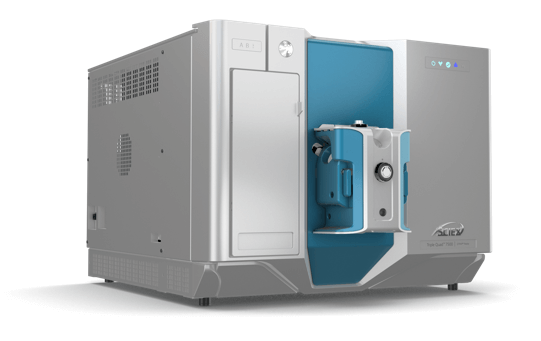
Introduction
The ability to achieve high levels of sensitivity while retaining quantitative performance is key to achieving robust analytical results. The growing number of demanding workflows requiring reliable quantification of more analytes per assay, in increasingly complex matrices, highlights the need for a sensitive MS instrument capable of providing the high level of performance that can meet these analytical challenges. The SCIEX Triple Quad 7500 system is enabling new levels of quantification across a large suite of sample types and workflows. The greater sensitivity is achieved through the introduction of hardware features that enable significant gains in the generation, capture and transmission of ions.
Improvement in the efficiency of ion capture and transmission is because of the D Jet ion guide, which achieves greater sensitivity by sampling more ions, and without sacrificing robustness. Improved ion generation and sampling is accomplished through better desolvation, achieved by the addition of the E Lens probe that delivers more sensitivity in ESI by increasing the field strength experienced by the ESI droplets. The versatility of the OptiFlow Pro ion source provides the ability to analyze a wide range of compounds by seamlessly switching between ESI and APCI mode. In addition, the modular architecture of the source enables users to change flow rates by simply changing probes and electrodes in the source. This improved versatility enables users to achieve the best sensitivity under all conditions, future proofing labs for future innovations across many different applications.
Integrated into the SCIEX 7500 system, these technology features result in average peak area gains, across many different types of analytes, of approximately 7-fold (Figure 1), providing significant assay sensitivity gains across many applications.1,2,3
Figure 1. Sensitivity gains for SCIEX 7500 system over QTRAP 6500+ system. Large numbers of analytes were run in various matrices on both systems and the peak areas and S/N gains were measured. (Left) Example data from propranolol in rat plasma, area gain of 9x with S/N gain of 3x. (Right) Summary of comparison of 1244 MRMs in positive and negative mode across 10 studies (pesticides, drugs, peptides), average peak area gain across the compounds was 7x.
Key innovations in the SCIEX Triple Quad 7500 system
- D Jet ion guide—improved ion capture and transmission, combined with an orifice with increased sampling area for increased ion sampling, resulting in greater sensitivity
- E Lens probe —improved ion generation through more energetic ESI droplet desolvation and more efficient ion collection
- OptiFlow Pro ion source—designed for robustness and ruggedness with modular architecture to future proof the lab
- QTRAP system upgradeable4—triple quadrupole functionality for quantification, plus full scan linear ion trap MS/MS for confirmation and MRM3 for selectivity5
- Detection system with high energy dynode and pulse counting detector—fast polarity switching (5 msec) and up to 6 orders of magnitude across the linear dynamic range
- SCIEX OS software—designed for quick, intuitive and streamlined data acquisition and data processing, all on one single platform6
D Jet ion guide
When ions enter the mass spectrometer through the orifice, from atmospheric pressure into the vacuum, they experience a large free-jet expansion. It is very important that there is an element behind the orifice that can quickly and efficiently capture and focus these ions into a narrow beam. These elements have evolved over the years, from skimmer cones to quadrupoles to the QJet ion guide—and now the D Jet ion guide.
The D Jet ion guide has a dual stage design that transports ions between the orifice and Q0. In the first vacuum stage, a dodecapole RF ion guide has been developed to capture and focus ions that are sampled though the orifice. The QJet ion guides in other SCIEX systems are single stage quadrupole ion guides. Quadrupole ion guides focus ions along the central axis of the ion guide. They are less effective, however, for operation at higher gas pressures. Conversely, higher order multipoles such as octapoles and dodecapoles confine ions more towards the periphery, and have deeper but flatter potential wells for an equivalent voltage, making them ideal for the SCIEX 7500 system.
High pressure ion guides like the D Jet ion guide require a large number of electrodes to generate a high-order multipole field. They also need to be designed to constrain the gas flow and pressure in the second stage ion guide to minimize shock waves that would result in poor transmission efficiency. To constrain gas flow within the D Jet ion guide, the electrode surfaces gradually narrow and tilt inward to provide a smaller radius at the exit. In addition, each of the plurality of electrodes gradually becomes thicker toward the narrower exit end of the ion guide.
Experimental results and simulations suggest that the transmission efficiency of the D Jet ion guide is superior to previous designs. The conclusion from computational fluid dynamics (CFD) simulations (Figure 2) is that gas flow is critical to the efficiency of high-pressure ion guides. Although electrical containment is necessary, optimized hardware design to eliminate beaming and other deleterious gas flow effects is critical. The D Jet ion guide has been optimized for use at high pressure and provides broad optima for the RF potential. As a result of this optimization, simulations have demonstrated greater than 90% efficiency for ion transmission through both stages of the D Jet ion guide.8
Figure 2. D Jet ion guide. The D Jet ion guide efficiently captures and transmits the ions in the high gas flow behind the orifice plate.
OptiFlow Pro ion source with E Lens probe
The fourth generation in the Turbo V ion source family, the OptiFlow Pro ion source provides the highest flexibility and functionality, due to the modular architecture, while maintaining the robustness and reproducibility of previous generations. The source is compatible with a broad flow range, from microflow (1 µL/min) to analytical flow (up to 3 mL/min), with interchangeable probes and electrodes. The OptiFlow Pro ion source is optimized for performance and robustness; no positional tuning is required at any flow rate. Interchangeable ESI and APCI towers allow users to easily switch between ionization modes for broad compound coverage.
E Lens probe places an electrode near the orifice to drive ions from the spray plume towards the orifice. This lens creates a stronger field that the ions must traverse, which imparts more energy into the droplet and causes more efficient break-up and release of more ions, resulting in enhanced ion collection (Figure 3). This improved desolvation leads to increased sensitivity with performance gains up to 2-fold, with the largest gains observed for peptides when combined with microflow rates.7
Figure 3. E Lens probe. The E Lens probe creates an increased field strength near the instrument orifice, which improves ion collection efficiency and drives more energetic ESI droplet desolvation, therefore improving ion generation and sensitivity. |
Robustness across many injections
The ability to run a specific assay on many complex samples across multiple days is also key to success in many applications. Key to robustness on SCIEX mass spectrometers is the combination of the highly efficient OptiFlow Pro ion source design and the optimized geometry of the Curtain Gas interface. Here, a study was performed in a very complex matrix (black tea) to test the robustness of the system with the D Jet ion guide on the SCIEX 7500 system (Figure 4). Minimal degradation in peak area or decrease in signal to noise was observed across 2700 injections, with peak area variance across the dataset of 4.05%. These results highlight that the instrument sensitivity is increased with no loss in robustness, providing rugged performance for complex biological matrices.
Figure 4. High robustness observed across 2700 injections. To test robustness, a large number of injections were performed using a very complex matrix (black tea dosed with carbendazim) using a short 4 min LC gradient at 400 µL/min. The raw peak area of carbendazim was then plotted vs. injection number and the variance across these peak areas was computed to be 4.05% for 2700 injections. Also shown is the raw data for the first and last injections, highlighting a minimal change in S/N across this very large number of injections of complex matrix.
Linear dynamic range
Linear dynamic range (LDR) is important in many applications where the analyte concentration varies widely. On the SCIEX 7500 system, up to 6 orders of magnitude across the LDR is achievable (Figure 5), which improves quantitative coverage and increases lab throughput. This detection system equipped with a multi-channel electron multiplier and dead time correction algorithm achieves a very high pulse counting rate. As a result, intense peaks of up to 1 x 108 cps can be measured with no observed detector saturation.
In addition, because of the presence of the high energy dynode as part of the detector, the system can switch between polarities extremely fast (5 msec), enabling detection of a larger number of diverse analytes in a single injection.
Figure 5. Wide linear dynamic range. Chloramphenicol was run in simple matrix over a broad concentration range with linearity observed from 0.031 to 40000 ng/mL.
Conclusions
The SCIEX 7500 system is the next high end quantitative platform from SCIEX. With the same ruggedness and robustness of previous generations, the SCIEX 7500 system provides higher sensitivity to meet the needs of the most challenging assays.
- D Jet ion guide and integrated E Lens probe combine to deliver significant sensitivity gains over the previous generation of instruments: average MRM peak area gains of 7x and signal to noise gains of 2.5 to 3x.
- The OptiFlow Pro ion source, built on the reliability and efficiency of the legendary Turbo V ion source, now provides high flexibility to meet diverse application needs with a single source solution. The modular design allows fast switching between high and low flow regimes and adapts to workflow requirements (ESI vs. APCI ionization modes).
- Up to 6 orders of linear dynamic range and fast polarity switching (5 msec) are available.
References
- Sensitivity gains for the evolution of routine bioanalysis. SCIEX technical note RUO-MKT-02-11885-A.
- Precise Testing of pesticides in food using the SCIEX Triple Quad 7500 system. SCIEX technical note RUO-MKT-02-11917-A.
- Reproducible targeted peptide profiling using highly multiplexed MRM assays - SCIEX 7500 system. SCIEX technical note RUO-MKT-02-12094-A.
- Powerful scan modes of QTRAP system technology . SCIEX technical note RUO-MKT-02-8611-A.
- MRM3 quantitation for highest selectivity in complex matrices. SCIEX technical note RUO-MKT-02-2739-A.
- SCIEX OS software: Transform your samples into meaningful analytical answers
- Significant gains in quantitative sensitivity using microflow chromatography. SCIEX technical note RUO-MKT-02-11887-A.
- Javaheri H, Schneider BB (2021) Ion Guide for Improved Atmosphere to Mass Spectrometer Vacuum Ion Transfer. JASMS epub.
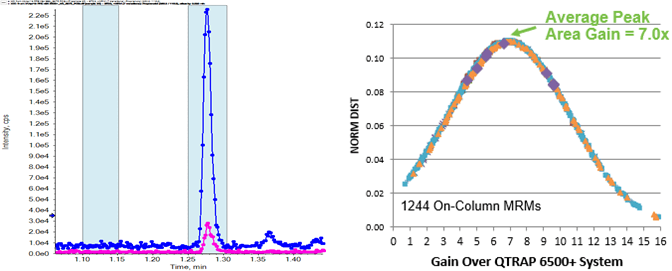 Click to enlarge
Click to enlarge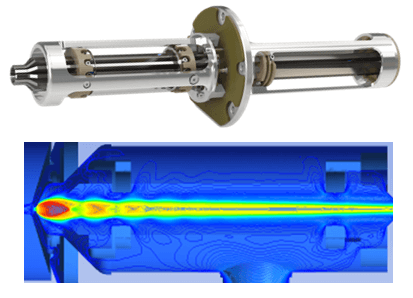 Click to enlarge
Click to enlarge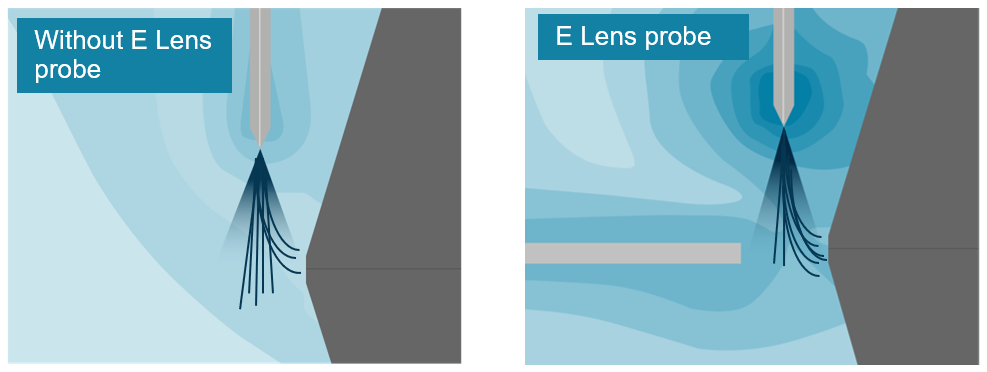 Click to enlarge
Click to enlarge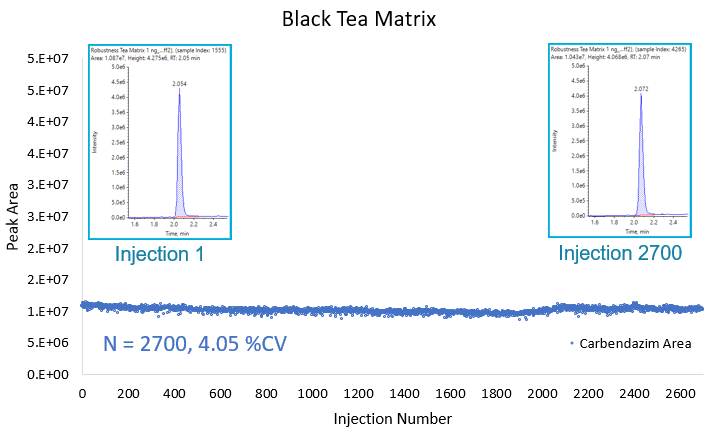 Click to enlarge
Click to enlarge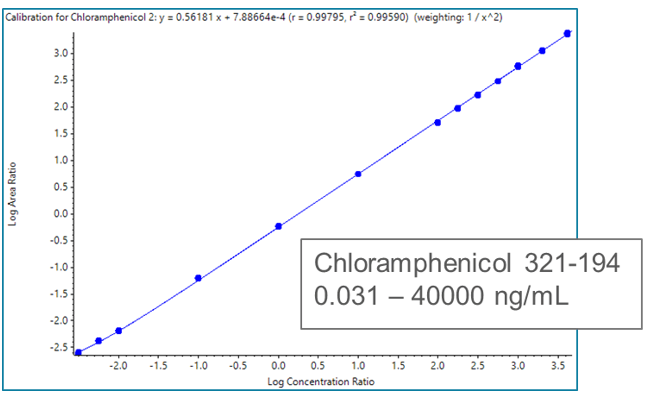 Click to enlarge
Click to enlarge